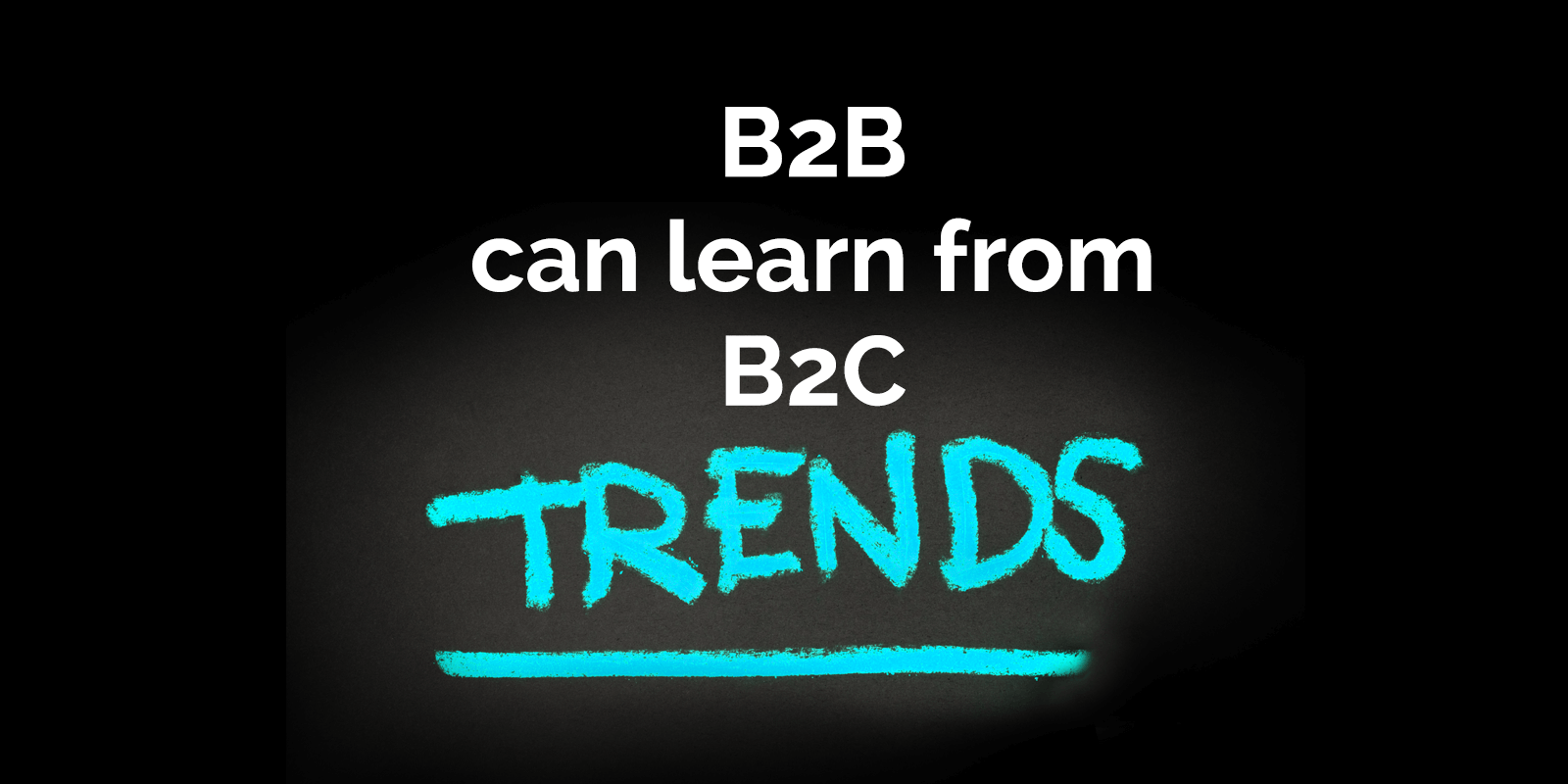What B2B Can Learn from B2C eCommerce Trends (IBM Edition)

Last year, IBM released a white paper about the growing convergence between B2C sales channels and B2B sales channels. The trends they predicted hold even more true today, as do their recommendations revolving around technology, integration, and customer experience.
Their main thesis? That B2B organizations need to start thinking more like B2C organizations, especially when it comes to eCommerce and omni-channel.
Why?
Part of the story has to do with how B2B decision-makers are arriving at their purchase decisions. In short, these decision-makers are adopting behaviors and strategies that look very much like those consumers already use in the B2C world. For example:
- 89% of B2B researchers use the internet during the B2B research process, and 73% of global traffic to B2B company sites originates from search engines.
- 57% of the buying process is done prior to engaging with Sales.
- 80% of companies believe that customer expectations have changed due to B2C practices.
- 75% of B2B buyers are influenced by social media.
These behaviors don’t just point to the channels that people are using when doing research for purchases. They suggest a certain level of expectation that exists in both realms. As the article puts it:
“Personal computers, smart phones and tablets—the way in which we purchase goods and services—is undergoing a radical transformation as a result of technology’s continued evolution. If we purchase goods and services using a PC, tablet or smartphone, the expectation is for a consistent experience across each of these channels—and that the experience should be top notch.”
The full white paper, “The Convergence of the Enterprise Sales Model: Exceed your B2B clients’ expectations—emulate the B2C model,” can now be found in its entirety on IBM’s website. (Until recently, the paper was behind a gate.) We recommend taking a look at the paper, as it makes many interesting points, backed up with data and sound argument.
In particular, we found it interesting that IBM is recommending some pretty concrete steps for B2B organizations, all of which revolve around technology, integration, and customer experience. Infoplus is no stranger to these concepts, so we thought we’d summarize some of their insights—and weigh in on a few points.
3 Areas B2B Organizations Need to Start Developing
Configuration, Price, and Quote. Having an online sales presence is nice, but it often “fails to account for the complexity in assembling complex orders with consistency.” In other words, customization and complexity are an integral part of B2B ordering—and that is something that eCommerce has struggled with (compared with, say, direct sales).
After all, why expect the customer to bring all the necessary expertise to the table? As the article states, “The sales challenge which hampers direct sales and partners is only magnified when the actual customer, often lacking the knowledge required to accurately assemble a valid configuration, either orders incorrectly, or abandons the effort, resorting to the more traditional sales channels, or perhaps even worse, engages a competitor who’s provided a simpler, more enjoyable purchasing experience.”
Being able to generate a customized order, with accurate pricing—including shipping, if applicable—will be a continuing challenge for online B2B sales. That said, it is one that is easy to overcome, if the effort is put into it.
Order Management. “Successful order management projects are unique in their ability to create brand loyalty by demonstrating a unified commerce approach, spanning pre- and post-sales.” We couldn’t agree more. Every phase of sales, from awareness and research to ordering to fulfillment, should all be geared toward a unified brand experience. This requires integration of key systems (ordering, accounting, warehouse/fulfillment, and shipping), automated data workflows, and real-time tracking, especially during the fulfillment and delivery process.
eCommerce. Customization, order management, and brand experience can come together in many ways. But given the stats above, it makes sense to invest in an eCommerce platform (fully integrated with accounting and fulfillment systems, of course). According to IBM, an investment in a successful B2B eCommerce platform would focus on:
- “Creating content-rich product pages with expected details such as stock keeping units (SKU) numbers, product, price and country of origin details.”
- Enabling the buyer to view inventory levels and delivery estimates by “capitalizing on earlier order management investments [and] end-to-end integration of the platform.”
- A scalable infrastructure that enables “intuitive, self-service e-commerce.”
We would also add that successful eCommerce should allow for customer engagement at every stage, giving them access to tracking information, updates, and, if necessary, speedy customer service. Fulfillment itself can be a key part of this engagement, as it is the one place where “the rubber hits the road”—i.e., where the digital transaction produces something real-world and tangible. Speedy delivery, quality packaging, and added extras (a catalogue, a coupon, or even a message from the CEO) can have a huge effect on perception and differentiate your eCommerce efforts.
Overall, IBM predicts an overall global trend toward more automation and heavier use of the self-service model. This only means that eCommerce will continue to grow—especially in B2B, where uptake has not yet reached the levels it has with B2C sales.
Increased eCommerce in B2B means more opportunities—and more pressure from the competition. The winners will be those organizations that can go to market sooner by achieving the goals outlined here and in the white paper.
.png?width=225&height=60&name=Logo%20(7).png)


